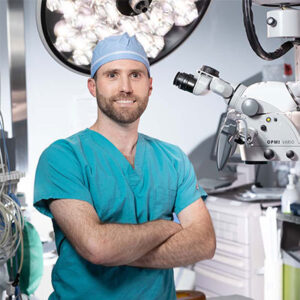Ejaculatory Dysfunction
What is ejaculation?
Ejaculation is the release of sperm and seminal fluid during male orgasm. During orgasm, the vas deferens tube transports sperm to the prostate, where the sperm mix with other fluids to produce liquid semen (ejaculate).
If a male and female want to achieve natural fertilization during intercourse, ejaculation needs to occur in the woman’s vagina so that the deposited sperm can then travel to reach the female partner’s egg.
But Nature does not always work as everyone might hope. Ejaculatory dysfunction is among the most common sexual disorders worldwide, and it can be one of the most frustrating and sensitive-in-nature, sexual challenges a couple can experience.
Fortunately, there are many medical options for sexual disorders, and there are many options for joining sperm and egg other than intercourse.
What is ejaculatory dysfunction?
Ejaculatory dysfunction can be characterized as premature, delayed, or absent ejaculation. The causes of absent ejaculation may include obstruction, retrograde ejaculation, or anejaculation.
Most men with ejaculatory dysfunction who seek an evaluation are younger patients desiring fertility.
Fortunately, there are many solutions for ejaculatory dysfunction. With a careful evaluation from an experienced male fertility specialist, treatment of ejaculatory dysfunction affords options to couples attempting to achieve pregnancy. Medications, assistive neurostimulatory methods for ejaculation such as PVS and electroejaculation, and even surgical sperm retrieval are available. All of these options provide hope to a couple that wants to have a family of their own.
Two common ejaculatory disorders result in infertility: retrograde ejaculation and anejaculation.
What is retrograde ejaculation?
During normal ejaculation, the muscle at the opening of the bladder tightens and semen is expelled through the urethra and out the tip of the penis. This tightening of the bladder neck muscle is what prevents ejaculate from entering the bladder as it travels from the prostate gland into the tube inside the penis (urethra). The bladder neck muscle is the same muscle that holds urine in the bladder until a male urinates.
With retrograde ejaculation, the bladder neck is abnormally relaxed during climax and the semen enters the bladder rather than being expelled through the urethra. Retrograde ejaculation does not affect a male’s ability to get an erection or have an orgasm, but it typically results in little or no semen coming through the penis (dry orgasms).
Retrograde ejaculation is not harmful, but it can cause male infertility. Treatment for this condition is usually only needed to restore fertility.
Signs and symptoms of retrograde ejaculation include:
- Ejaculations with very little or no semen coming out of the penis
- Urine that is cloudy after an orgasm due to the presence of semen
- Inability to get a female partner pregnant (male infertility)
What causes retrograde ejaculation?
Retrograde ejaculation may result from:
- Uncontrolled diabetes (the most common cause)
- Neurologic problems
- Side effect of certain medications (e.g., tamsulosin, used for treatment of urinary symptoms related to enlarged prostate)
- Previous pelvic or transurethral surgery
- Malformations of the bladder neck from birth
Retrograde ejaculation should be ruled out as a first step in the workup of ejaculatory dysfunction as treatment is often successful without invasive procedures. The evaluation involves examination of a urine sample after ejaculation.
How can retrograde ejaculation be treated?
Retrograde ejaculation can occasionally be treated with correction of the underlying problem such as treatment of diabetes. Retrograde ejaculation may also be improved with the use of medications such as pseudoephedrine (more commonly used as a decongestant).
If these measures are unsuccessful, sperm can be harvested from the urine after ejaculation for use with intrauterine insemination (IUI) or in vitro fertilization (IVF).
When to see a doctor
If a couple has been unable to conceive for a year or longer and the male is experiencing dry orgasms, retrograde ejaculation might be the cause. A specialist can provide an evaluation.
You may also want to see a specialist to discuss lowering your risk of retrograde ejaculation if you are desiring fertility and:
- Have diabetes or other health conditions that put you at risk of retrograde ejaculation
- Take high blood pressure, depression, or prostate medication
- Need surgery that might affect your bladder neck muscle such as bladder or prostate surgery
What is anejaculation?
Anejaculation (or aspermia) is the lack of a visible ejaculate during a normal climax not caused by retrograde ejaculation. This can result either from a neurologic condition or another sometimes unknown cause. It can occur with spinal cord injury, erectile dysfunction, hormone problems, or emotional inability.
Anejaculation (no ejaculation) is technically distinct from anorgasmia, which is the lack of climax. However, these two conditions share many of the same causes and treatment options. Therefore, they are often referred to as a single condition under the umbrella term anejaculation.
Anejaculation is often divided into two categories based on symptoms:
- Lifelong vs. acquired. A lifelong problem starts at the time of sexual maturity. An acquired problem occurs after a period of normal sexual functioning as a mature adult.
- Generalized vs. situational. A generalized problem is not limited to certain kinds of stimulation or certain sex partners. A situational problem occurs only under particular circumstances.
When to see a doctor
Anejaculation can cause frustration for both a male and his partner. Consider seeing a specialist before frustration feels overwhelming to discuss:
- A health problem that might be linked to delayed ejaculation
- Medications that could be causing the problem
- Other symptoms along with delayed ejaculation that could be related
- Guidance on individual and partner issues around anejaculation
- Achieving fertility
How can anejaculation be treated to achieve fertility?
Treatment options to retrieve sperm for men with infertility due to anejaculation or anorgasmia include two different neurostimulatory methods.
What is Penile Vibratory Stimulation (PVS)?
Penile vibratory stimulation (PVS) is the recommended first-line treatment for anejaculation. It is simple, non-invasive, cost-effective, and successful in approximately 75% of cases.
PVS for neurogenic anejaculation due to spinal cord injury is most effective for men with spinal cord lesions above T10. PVS is performed using a commercially available device that can be purchased online without a doctor’s prescription.
If PVS is unsuccessful or not desired, electroejaculation is a more invasive alternative treatment of anejaculation that is almost uniformly successful.
What is electroejaculation?
Electroejaculation is a minor procedure performed in the office. It can be performed without the need for anesthesia for those with a spinal cord injury. It can also be performed in the office with deep sedation or with general anesthesia. The instrument used for this procedure is called an electroejaculator.
During the 15-minute procedure, after anesthesia is induced, a rectal probe is gently positioned over the prostate and seminal vesicles. Activation of the device induces pulsatile electrical stimulation to achieve ejaculation. No external incisions are made, and complication rates are less than 1% and may include minor rectal discomfort or temporary bleeding.
Who are good candidates for electroejaculation?
Electroejaculation is utilized for men who are unable to ejaculate for any reason, most commonly due to spinal cord injury, previous pelvic surgery, medication side effects, diabetes, erectile dysfunction, multiple sclerosis or other neurologic disorders, or for men or adolescents unable to provide a sperm sample for any other reason.
Electroejaculation may be particularly useful in the adolescent population for fertility preservation before cancer treatment if a semen sample cannot be provided.

The sperm obtained with electroejaculation may then be frozen (cryopreserved) and stored for later use. In some cases, it may be used as a fresh semen sample for traditional IUI or IVF.
What is the success rate of electroejaculation?
More than 95% of men undergoing electroejaculation achieve a semen sample for analysis, and more than 90% of men will have motile sperm for banking or fresh use with fertility treatments.
What if treatments with medication or neurostimulatory methods fail?
When treatments with medications or neurostimulatory methods for ejaculatory dysfunction fail, there always remains an option for surgical sperm extraction. Using sedation or general anesthesia, sperm can be extracted directly from the testicle or epididymis with a minor outpatient procedure. Surgically extracted sperm can be banked with cryopreservation and later used for IVF.

Dr. Matt Coward
Male Fertility Specialist
The Atlantic Difference
Dr. Matt Coward at Atlantic Reproductive Medicine offers experience, expertise, and compassion. If you are interested in learning more about ejaculation dysfunctions, our electroejaculator, or any fertility or infertility issue, call us today for a consultation @ (919) 328-3099.
Sources:
- Treatment Options for Patients with Ejaculatory Dysfunction, R. Matthew Coward, M.D., FACS, Assistant Professor of Urology, UNC School of Medicine, Chapel Hill, N.C., Director of Male Reproductive Medicine and Surgery, UNC Fertility, Raleigh, N.C.
- Mayo Clinic, https://www.mayoclinic.org/
Male Fertility Treatments

Causes of Male Infertilty
A common misconception is that an infertility problem usually lies with the female. The reality is that half of all infertile couples have a contributing male factor.

Vasectomy Reversal
Vasectomy reversal is a surgical procedure to undo a vasectomy and when done by a skilled surgeon it is successful on most men.

MicroTESE
Microsurgical testicular sperm extraction (microTESE) retrieves sperm from the seminiferous tubules of a male’s testes in men with non-obstructive azoospermia.

No-Scalpel, No-Needle Vasectomy
No–scalpel, no-needle vasectomy is the least invasive form of vasectomy, a safe and effective form of birth control for males who are confident they do not want to father a child in the future.

Semen Analysis
Semen analysis evaluates the quality and volume of a sperm in semen. It is one of the first steps to detect male infertility issues.

Azoospermia & Abnormal Semen Quality
Azoospermia is the absence of sperm in the ejaculate. Abnormal semen quality in ejaculate refers to quality issues with sperm in the semen that can make the sperm unable to achieve fertilization of an egg.

Varicocele
A varicocele is a dilated vein within the scrotum which holds and protects the testicles. It can occur in one or both testicles and can cause male infertility.

Ejaculatory Dysfunction
Ejaculatory dysfunction is among the most common sexual disorders but there are many solutions, including medications, assistive neurostimulatory methods, and surgical sperm retrieval.

Sperm Selection
Sperm selection can separate highly motile, normal sperm from those of lower quality which is critical for fertility treatments such as intrauterine insemination (IUI), in vitro fertilization (IVF), or intracytoplasmic sperm injection (ICSI).

Sperm Retrieval
Sperm retrieval (harvesting) is done to find and retrieve sperm from the testis or epididymis in men who want to achieve pregnancy but have no sperm in their ejaculate.
